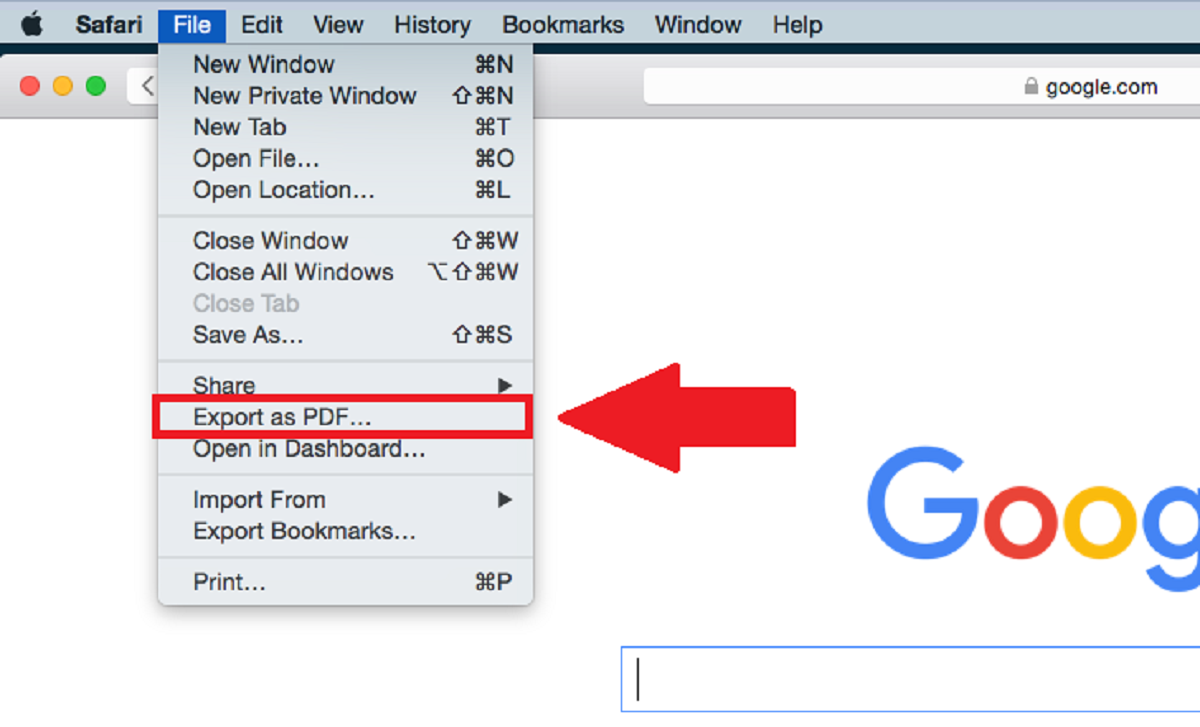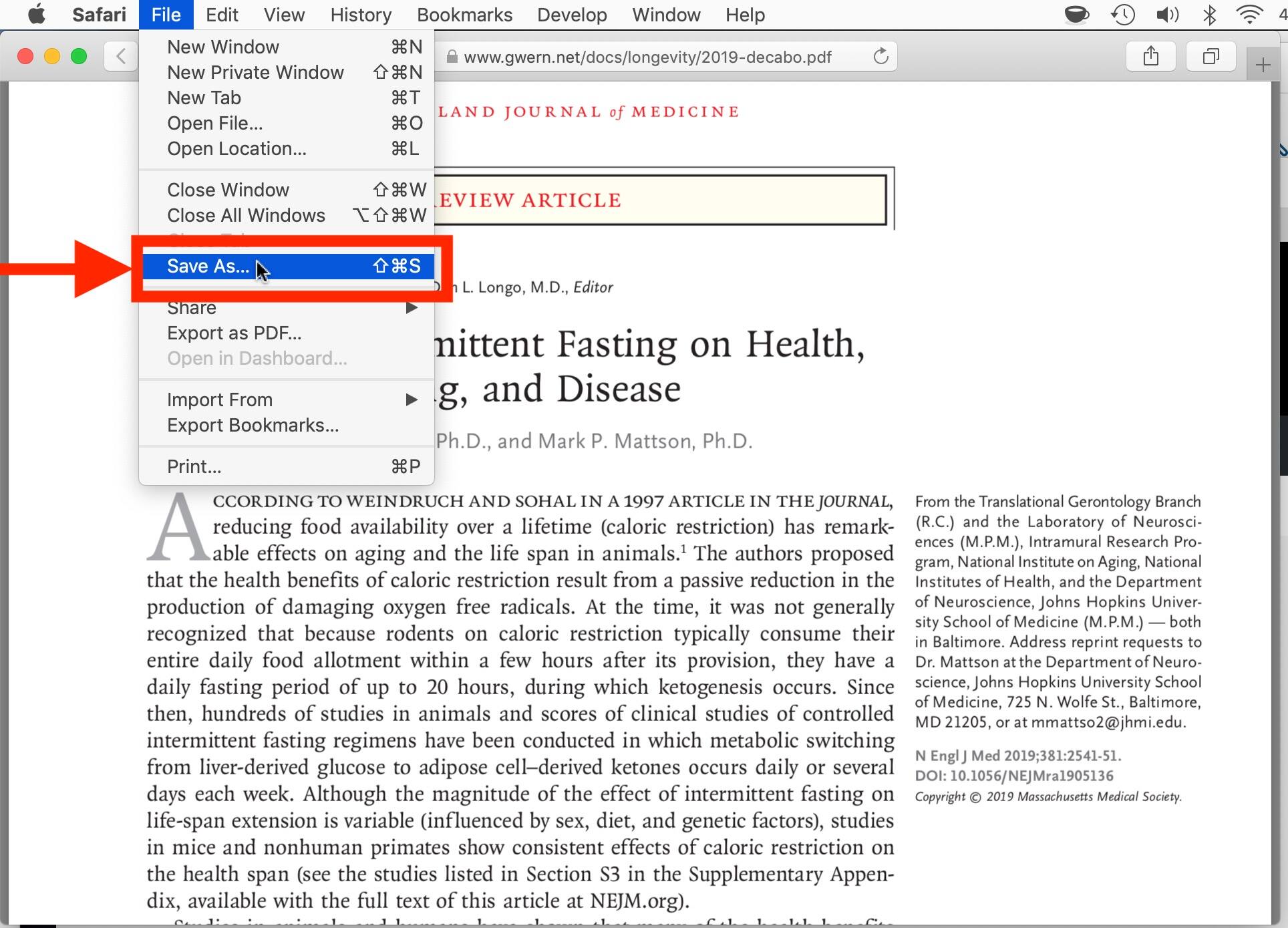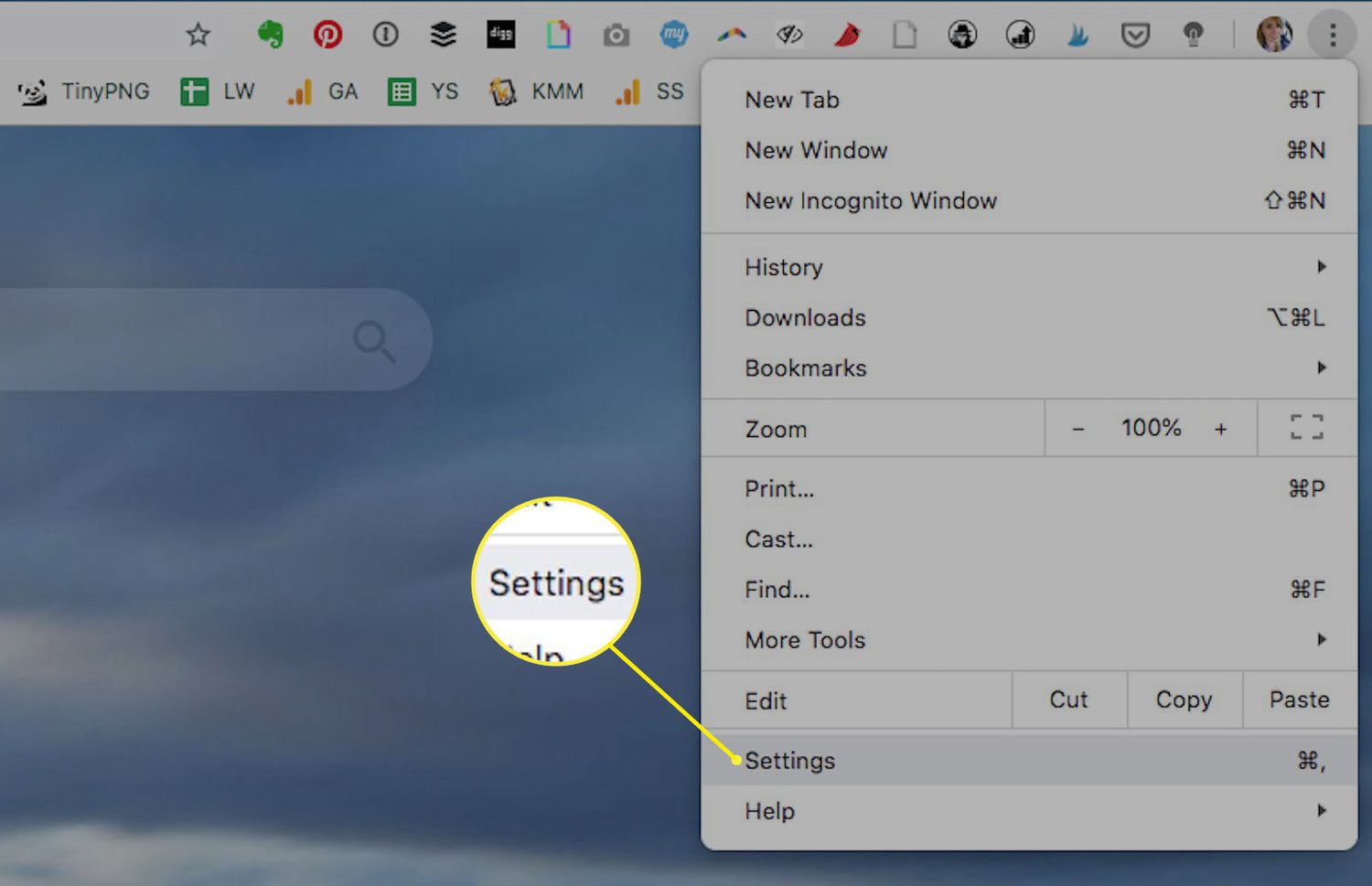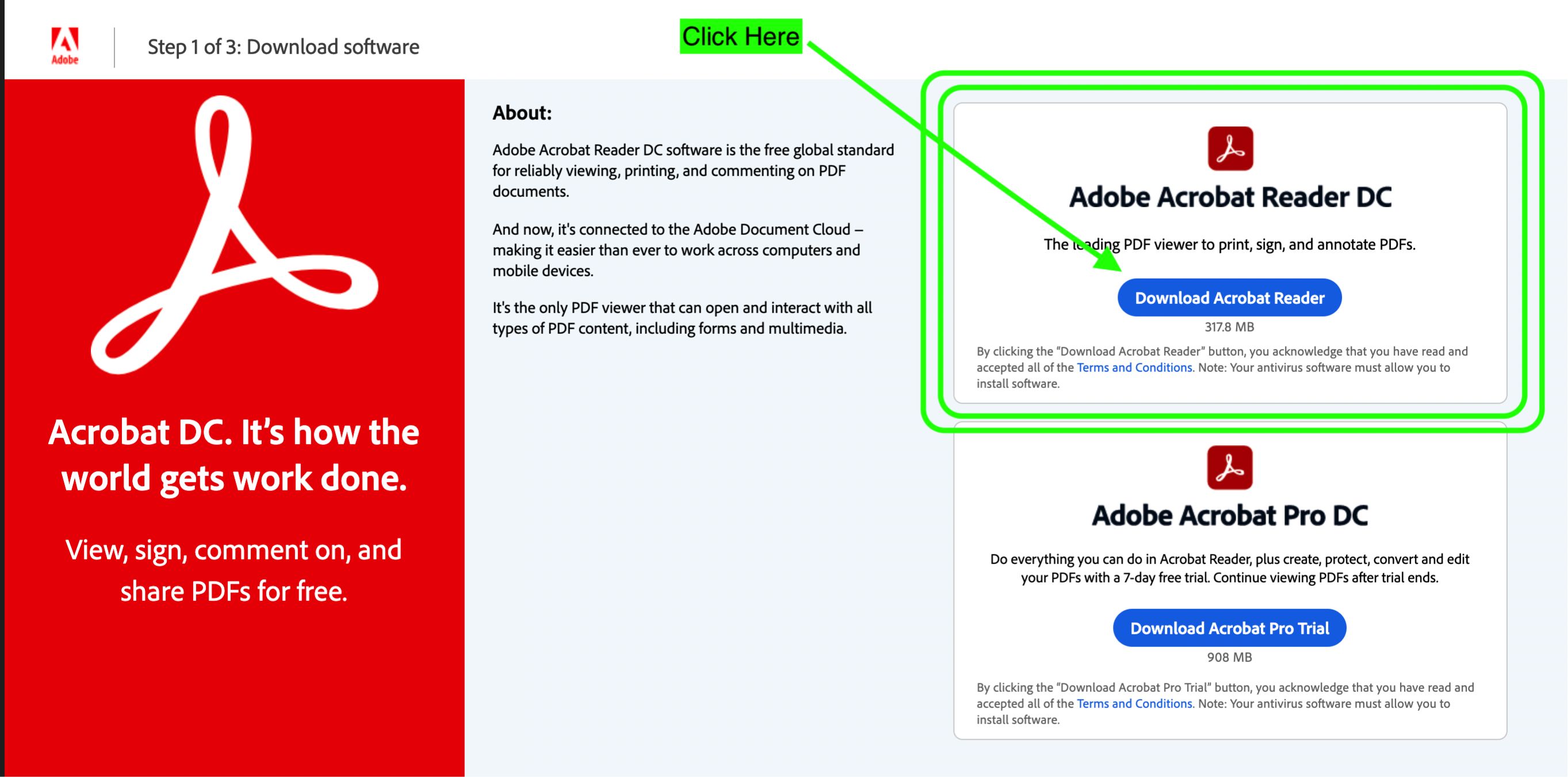Introduction
Downloading a PDF on your Mac is a simple and convenient process that allows you to access and read important documents, reports, e-books, and more. Whether it’s for work, school, or personal use, being able to download and save PDF files offers flexibility and ease of access. In this guide, we will walk you through the step-by-step process of downloading a PDF on your Mac, so you can quickly and effortlessly start building your digital library.
With the vast array of information available online, finding the right PDF file can sometimes be a challenge. However, with a little know-how, you can easily locate and download the PDFs you need from reliable sources. Once saved to your Mac, you can open and view the downloaded PDFs using various software applications, making it convenient for you to read, review, or share the information contained within.
Whether you’re a student looking for scholarly articles, a professional seeking research papers, or a book lover searching for the latest e-book releases, this guide will provide you with the necessary steps to effortlessly download PDF files on your Mac.
So, if you’re ready to enhance your reading experience and expand your digital library, let’s get started with the step-by-step process of downloading a PDF on your Mac.
Step 1: Open a web browser
To begin the process of downloading a PDF on your Mac, the first step is to open a web browser. Popular web browsers such as Safari, Google Chrome, or Mozilla Firefox are commonly used on Mac devices. You can find these browsers in your Applications folder or by using Spotlight search.
Once you have located and opened your preferred web browser, the next step is to ensure that you have a stable internet connection. PDF files are typically hosted on websites and can be accessed and downloaded using a web browser.
Now that your web browser is open and you have a reliable internet connection, you are ready to proceed to the next step of finding the PDF file you wish to download. Keep in mind that PDF files can be found on various websites such as academic journals, online databases, e-book platforms, and even personal websites.
Having multiple web browser tabs open can be useful when conducting a search for a specific PDF file, as it allows you to easily switch between different sources and websites. This can help you quickly browse through search results and find the most relevant link to download the desired PDF file.
Remember to use trusted websites and sources when downloading PDF files to ensure you obtain reliable and secure documents. By opening a web browser and preparing to search for the PDF file, you have taken the first step towards downloading and accessing valuable information on your Mac.
Step 2: Search for the PDF file
With your web browser open and a stable internet connection established, it’s time to search for the PDF file you want to download. The key to finding the right PDF file is conducting an effective search using relevant keywords.
Start by opening a search engine such as Google, Bing, or Yahoo in your web browser. In the search bar, type in keywords related to the content of the PDF file you are looking for. For example, if you are searching for a research paper on climate change, you could use keywords like “climate change research paper” or “climate change PDF.”
To refine your search, you can use quotation marks to search for an exact phrase or include specific terms in the search query. This will help you get more accurate search results that match your desired PDF file.
As you browse through the search results, pay attention to the titles and descriptions of the websites listed. Look for reputable sources such as educational institutions, government websites, or trusted online libraries. These sources are more likely to provide reliable and high-quality PDF files.
If you are looking for a specific PDF file from a known source, you can also include the name of the source or author in your search query. This can help narrow down the results and direct you to the exact PDF file you are seeking.
Once you have found a website that offers the PDF file you want to download, proceed to the next step to access and download the file onto your Mac. Remember to exercise caution and use trusted and legitimate sources to ensure the safety and security of your device.
Step 3: Visit a website that offers PDF downloads
After conducting a search for the PDF file you’re looking for, you will come across various websites that offer PDF downloads. Now it’s time to visit one of these websites to access the PDF file you want to download onto your Mac.
When selecting a website, it’s important to choose a reliable and reputable source. Look for websites that are known for providing legitimate and high-quality PDF files. Academic institutions, government websites, and reputable online libraries are often trustworthy sources for downloading PDFs.
To visit a website, simply click on the link displayed in the search results or enter the URL directly into the address bar of your web browser. Once you land on the website, take a moment to familiarize yourself with the layout and navigation options.
Sometimes, websites provide a search function specifically for finding PDF files. If you have a specific document in mind, you can use this search function to quickly locate the desired PDF. Alternatively, you may browse through different categories, sections, or directories on the website to find the PDF you’re interested in.
When choosing a website, be cautious of those that require you to sign up or provide personal information before accessing the PDFs. These websites may have hidden agendas or may not be reliable sources. It’s generally best to select websites that allow you to download PDFs without any unnecessary requirements.
Once you have found the PDF file you want to download, proceed to the next step to initiate the download process. Keep in mind that some websites may offer additional features or options, such as previewing the PDF before downloading it. Take advantage of these features if they are available and ensure that the PDF meets your needs before downloading it onto your Mac.
Step 4: Locate and click on the PDF download link
Now that you’re on a website that offers the PDF file you want to download, the next step is to locate and click on the PDF download link. This link is usually indicated by a button or text that says “Download,” “PDF,” or “Download PDF.”
Scan the webpage for any visible links or buttons that may lead to the PDF download. The link or button is often placed near the description or preview of the PDF file. It may also be located under a dedicated download section or tab on the webpage.
In some cases, the PDF download link may be hidden behind a text or image link. Move your cursor over the webpage content and look for any highlighted or underlined text that could potentially be the download link. Clicking on this text or image will usually initiate the PDF download.
If you’re having trouble locating the download link, you can try using the “Find” feature in your web browser. Press “Ctrl + F” (Windows) or “Command + F” (Mac) to open the search box. Type in keywords like “PDF” or “download” to highlight any relevant terms on the webpage. This can help you quickly find the download link.
Before clicking on the download link, ensure that you are selecting the correct file. Confirm that the file name, size, and other details match your requirements. This will help prevent accidentally downloading the wrong file or any potentially harmful content.
Once you have located the PDF download link, click on it to initiate the download process. Your web browser will start downloading the PDF file and display the progress in the downloads bar or window. Depending on the size of the PDF file and your internet connection speed, the download may take a few seconds or longer to complete.
Congratulations! You have successfully located and clicked on the PDF download link. Proceed to the next step to determine where you want to save the downloaded PDF file on your Mac.
Step 5: Choose where to save the PDF file
After clicking on the PDF download link, your web browser will prompt you to choose where you want to save the downloaded file on your Mac. It’s important to select a location that is easy to find and accessible whenever you need to open or reference the PDF in the future.
By default, your web browser will suggest a default location to save the file. This location is often the “Downloads” folder on your Mac. However, you can choose a different location by navigating through your Mac’s file system.
To select a different location, click the “Choose…” or “Save As…” button in the download prompt. This will open a file explorer window where you can navigate to the desired folder or create a new folder to save the PDF. You can choose to save the PDF on your desktop, in a specific folder, or in a dedicated documents folder.
Consider organizing your downloaded PDFs into folders based on categories or topics. This will help you easily locate and manage your files in the future. For example, you could create folders for work-related PDFs, academic papers, e-books, or personal documents.
Furthermore, ensure that you give the downloaded PDF file a meaningful and descriptive name. This will make it easier to identify the content of the file without having to open it. Avoid using generic names like “Document.pdf” and instead use specific names such as “Research Paper on Climate Change.pdf” or “User Manual for XYZ Software.pdf.”
Once you have chosen the location and provided a name for the PDF file, click the “Save” or “OK” button to save the file to your selected location. Your web browser will complete the download process and the PDF file will now be stored on your Mac.
Great job! You have successfully chosen where to save the downloaded PDF file. In the next step, we will cover how to initiate the download process and wait for the PDF file to complete downloading on your Mac.
Step 6: Click “Save” or “Download” to start the download process
After choosing where to save the PDF file, the next step is to initiate the download process by clicking the “Save” or “Download” button. This action will instruct your web browser to begin downloading the PDF file onto your Mac.
Depending on your web browser, the download prompt may appear at the bottom of the browser window or in a separate downloads bar or window. It will generally display the name of the PDF file, the file size, and the download progress.
To start the download, click the “Save” or “Download” button in the download prompt. Your web browser will start transferring the PDF file from the website’s server to your selected location on your Mac’s storage. You can monitor the progress of the download in the downloads bar or window.
During the download process, it’s important to maintain a stable and uninterrupted internet connection. If the connection is lost, the download may pause or fail. In such cases, you can resume the download once the connection is restored by clicking the appropriate button in the download prompt.
The download speed will depend on factors such as the size of the PDF file and the speed of your internet connection. Larger files and slower connections may result in longer download times. You can estimate the remaining download time based on the progress indicated in the download prompt.
While the PDF file is being downloaded, avoid closing the web browser or turning off your Mac. Doing so may interrupt the download and require you to start the process again. It’s best to wait until the download is complete before moving on to other tasks or activities.
Once the download is finished, your web browser will provide a notification or display a message indicating that the PDF file has been successfully downloaded onto your Mac. Congratulations! You have successfully initiated the download process. In the next step, we will cover how to access the downloaded PDF file on your Mac.
Step 7: Wait for the download to complete
Once you have initiated the download process, it’s important to patiently wait for the download to complete before accessing the PDF file on your Mac. The time required for the download to finish will depend on various factors such as the size of the PDF file and the speed of your internet connection.
During the download, you can monitor the progress in your web browser’s downloads bar or window. It will display the percentage of completion and may also provide an estimated time remaining until the download is finished. This can give you an idea of how much longer you need to wait.
It’s important to ensure that your internet connection remains stable throughout the download process. Interruptions in the connection, such as a sudden loss of Wi-Fi or a network connection outage, can cause the download to pause or fail. If such an interruption occurs, you may need to restart the download once the connection is restored.
While waiting for the download to complete, it’s advisable to refrain from closing your web browser or turning off your Mac. Doing so may interrupt the download and require you to start the process again. It’s best to let the download finish before navigating away from the webpage or performing other tasks on your Mac.
You can use this waiting time to prepare for accessing the downloaded PDF file. Ensure that you have your preferred PDF reader application installed on your Mac. Popular PDF reader applications for Mac include Adobe Acrobat Reader, Preview, and PDF Expert. If needed, you can download and install a PDF reader from the Mac App Store or the developer’s website.
Once the download progress reaches 100% and your web browser notifies you that the download is complete, you’re ready to move on to the next step. In the following section, we will explain how to access the downloaded PDF file on your Mac and open it with your preferred PDF reader.
Step 8: Access the downloaded PDF file on your Mac
Congratulations! The download process is complete, and now you can access the downloaded PDF file on your Mac. Follow these steps to locate and open the file with your preferred PDF reader:
1. Navigate to the location where you saved the downloaded PDF file. This is the folder you selected in Step 5. If you’re unsure where you saved it, you can use the search function on your Mac to find the file by its name or file extension (.pdf).
2. Once you have located the PDF file, double-click on it to open it using the default PDF reader application installed on your Mac. The default application is usually Preview if you haven’t installed any other PDF readers. If you have an alternative PDF reader, like Adobe Acrobat Reader or PDF Expert, right-click on the PDF file and select “Open With” to choose your preferred application.
3. If the file opens successfully, you can now view and interact with the contents of the PDF. Use the navigation tools provided by your PDF reader to scroll through the pages, zoom in or out, and access different viewing options.
4. In addition to viewing the PDF file, you can also perform various actions depending on the capabilities of your PDF reader. These actions may include highlighting text, adding notes or annotations, searching for specific keywords, and printing the document if needed. Familiarize yourself with the features of your PDF reader to make the most of your reading experience.
Remember to keep your downloaded PDF files organized for easy access in the future. You can create folders dedicated to specific topics, authors, or projects to maintain a tidy digital library on your Mac.
It’s also a good practice to regularly back up your downloaded PDF files to an external storage device or cloud storage service to ensure their safety and prevent loss of important documents.
You have successfully accessed the downloaded PDF file on your Mac! Now you can read, review, and manage the PDF file as per your requirements. Enjoy the convenience and flexibility of having important documents at your fingertips on your Mac.
Conclusion
Downloading a PDF on your Mac is a straightforward process that allows you to access and store important documents, reports, e-books, and more. By following the step-by-step guide outlined in this article, you can quickly and effortlessly download PDF files onto your Mac and enhance your reading experience.
We started by opening a web browser and searching for the desired PDF file. Next, we visited websites that offer PDF downloads, located and clicked on the PDF download link, and chose where to save the downloaded file on our Mac. Then, we clicked “Save” or “Download” to start the download process, patiently waited for the download to complete, and finally accessed the downloaded PDF file on our Mac.
Throughout the process, it is essential to exercise caution and choose trusted sources for downloading PDF files. This helps ensure that you are obtaining reliable and secure documents for your use.
Remember, organizing your downloaded PDF files into folders based on categories or topics can make it easier to find and manage them in the future. Additionally, having a PDF reader installed on your Mac, such as Adobe Acrobat Reader or Preview, enables you to open and interact with the contents of the PDF file.
By following these steps, you can efficiently download and access PDF files on your Mac, expanding your digital library with valuable resources. Whether you’re a student, professional, or simply someone who enjoys reading, having access to PDF files offers a wealth of knowledge at your fingertips.
So, start exploring the vast world of PDF files and discover the wealth of information they hold. Download important documents, immerse yourself in captivating e-books, and stay up-to-date with the latest research papers. With your newfound knowledge and the convenience of PDF downloads on your Mac, the possibilities are endless.
Happy reading!
























